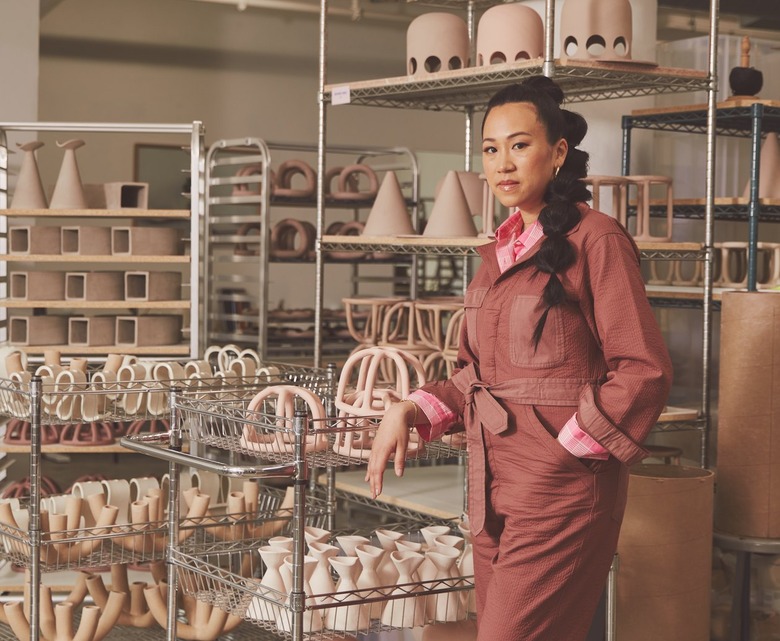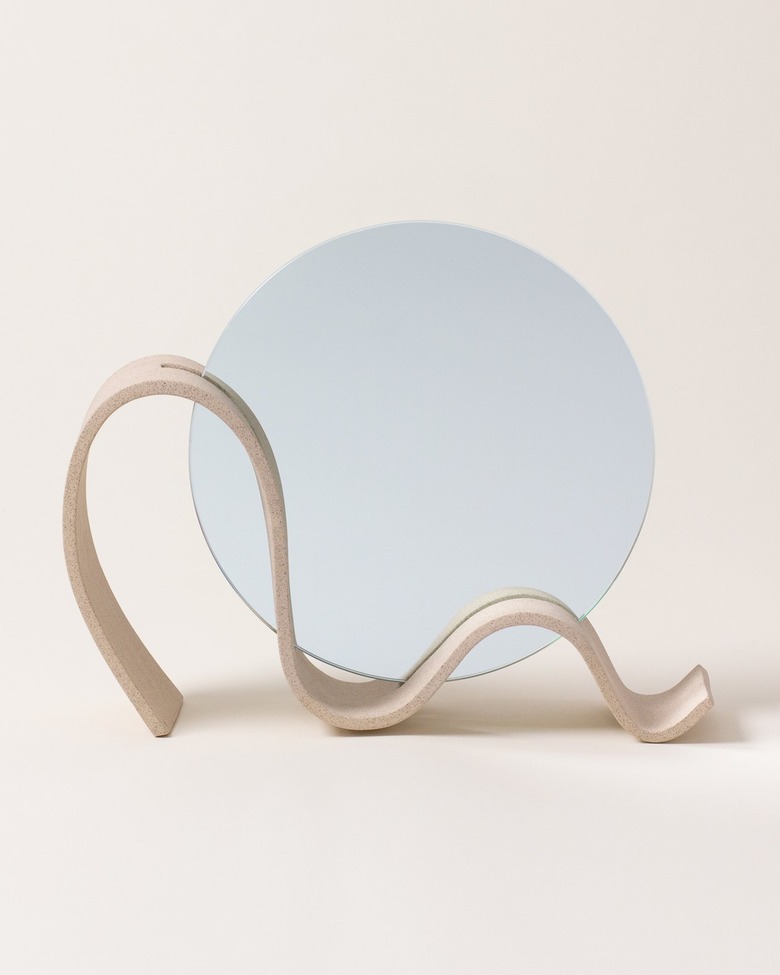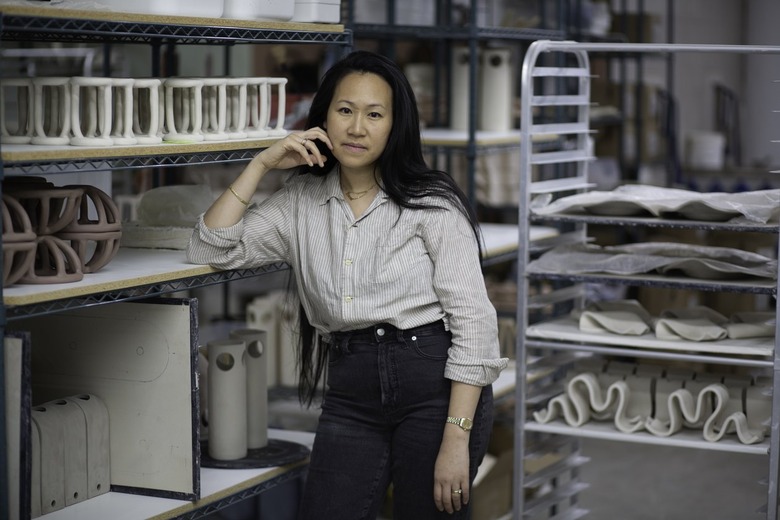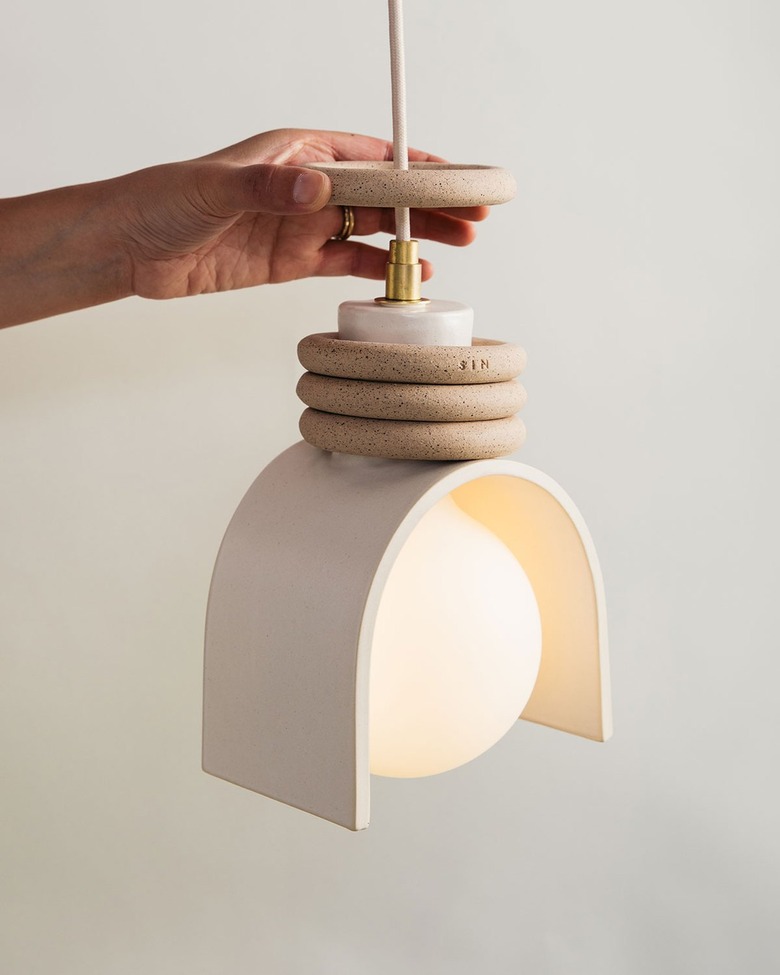Virginia Sin's Ceramics Brand Is A Manifestation Of Chinese American Pride
If you've got a pulse on the home decor scene, there's a good chance you've spotted designer Virginia Sin's famous porcelain paper plates. Initially created in 2007, the charming plates are used at Eleven Madison Park, a fine dining restaurant in New York City, and they continue to be her most iconic pieces to date.
The porcelain paper plate is just scratching the surface, though. Through her work at SIN, where she designs stunning clay pieces that exude warmth and ease, like the Wavee Table Mirror, Sin has mastered the art of meshing beauty and functionality, a combination she wasn't always familiar with.
"I was raised by Chinese immigrant parents who valued functionality and practicality over aesthetics when it came to home decor," Sin tells Hunker. "I think the notion of creating a cozy home with beautiful objects felt frivolous and was not part of my upbringing."
This has greatly influenced her work as a designer, as it has inspired her to find ways to combine the two philosophies. "At the root of all our products here at SIN, I make sure that beauty and functionality are never mutually exclusive," shares Sin. This is reflected in her company's mission: to spread warmth and happiness into every home by infusing function and delight into SIN's creations.
The mission is clear in the inception of the porcelain paper plate, which is rooted in her childhood memories of family potlucks. "My cousins and I would load up our cheap and impermanent paper plates with the most decadent, laborious home-cooked Chinese food prepared by my aunts and grandmother," recalls Sin.
However, if they went back for second helpings, the plates would become soggy. Meanwhile, the food, which was made with so much love, deserved to be on fine china, says Sin. "I'm quite nostalgic and wanted to transfer that very feeling in time, [and so I] captured it into a permanent, tangible object," she adds.
But that's just one example of how Sin's cultural experiences have influenced her work as a designer and small business owner. At SIN, she has strived to hire a diverse team of people, in terms of both talents and culture. "Each person brings such a different perspective to the table, and empowering them to step up as leaders is part of my vision for the company," shares Sin. "I want to set an example by leading and showing my team that leadership can look different."
Sin didn't always have this mindset, though. Like many children of immigrants, Sin struggled with her cultural identity growing up. She felt embarrassed of the food she brought to lunch, her mother using acupuncture and cupping as medication, and needing to leave class to take ESL (English as a Second Language). As a result, "I felt different and knew about race [and] culture at a very early age," says Sin. "I found myself feeling ashamed of my heritage and culture [during] most of my upbringing."
"People would never consider me American [at] first glance," Sin explains further. "If I'm lucky, maybe [they'd see me as] an Asian American. But I've had enough experiences where if I didn't fully speak up or [I] misheard someone, they'd assume that I didn't speak English. Perhaps this is why I'm such a loud person."
These days, however, Sin is no longer ashamed of her culture. "I've come a long way in feeling not only comfortable but proud to be an Asian American," says Sin. Case in point: "My company name SIN stems from my family name, pronounced 'Sien' in Chinese," she tells Hunker. Now, she feels proud to run a minority- and woman-owned small business.
But Sin is just getting started. "I love goal setting. My five-year goal is to design a hotel, and my company vision [is] to become a heritage brand," she shares. Considering how far Sin has come in her personal and artistic journey, we have no doubt that she'll make it happen.



